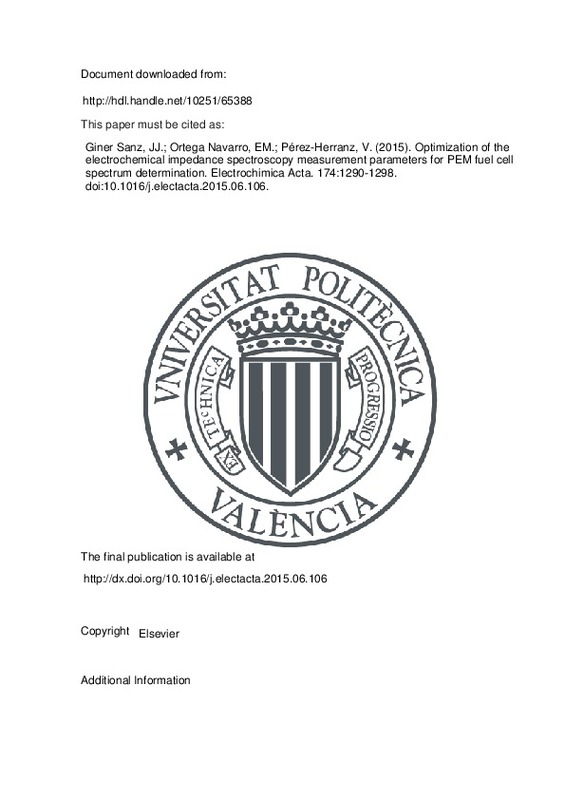JavaScript is disabled for your browser. Some features of this site may not work without it.
Buscar en RiuNet
Listar
Mi cuenta
Estadísticas
Ayuda RiuNet
Admin. UPV
Optimization of the electrochemical impedance spectroscopy measurement parameters for PEM fuel cell spectrum determination
Mostrar el registro completo del ítem
Giner Sanz, JJ.; Ortega Navarro, EM.; Pérez-Herranz, V. (2015). Optimization of the electrochemical impedance spectroscopy measurement parameters for PEM fuel cell spectrum determination. Electrochimica Acta. 174:1290-1298. https://doi.org/10.1016/j.electacta.2015.06.106
Por favor, use este identificador para citar o enlazar este ítem: http://hdl.handle.net/10251/65388
Ficheros en el ítem
Metadatos del ítem
| Título: | Optimization of the electrochemical impedance spectroscopy measurement parameters for PEM fuel cell spectrum determination | |
| Autor: | ||
| Entidad UPV: |
|
|
| Fecha difusión: |
|
|
| Resumen: |
Currently, electrochemical Impedance Spectroscopy (EIS) is a widely used tool for the study of electrochemical systems, in general; and fuel cells, in particular. A great effort is typically invested in the analysis of the ...[+]
|
|
| Palabras clave: |
|
|
| Derechos de uso: | Reserva de todos los derechos | |
| Fuente: |
|
|
| DOI: |
|
|
| Editorial: |
|
|
| Versión del editor: | http://dx.doi.org/10.1016/j.electacta.2015.06.106 | |
| Código del Proyecto: |
|
|
| Agradecimientos: |
|
|
| Tipo: |
|







![[Cerrado]](/themes/UPV/images/candado.png)


